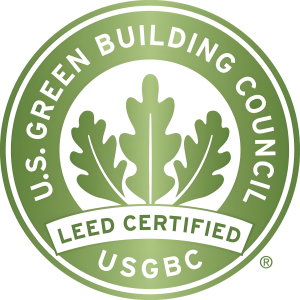Helping buildings and spaces with post-pandemic re-entry
Four new LEED pilot credits help building teams provide healthy spaces.
As part of its Healthy Economy strategy, USGBC has several new opportunities for buildings to assist with re-entry.
LEED Safety First pilot credits
The new LEED pilot credits outline sustainable best practices that align with public health and industry guidelines related to cleaning and disinfecting, workplace re-occupancy, HVAC and plumbing operations. The credits can be used by LEED projects that are certified or are undergoing certification.
- The Safety First: Cleaning and Disinfecting Your Space credit requires facilities to create a policy and implement procedures that follow green cleaning best practices that support a healthy indoor environment and worker safety. Although vaccines and medical treatments are still in development for treating COVID-19, effective disinfecting products and processes already exist. In addition to product considerations, the credit also requires procedures and training for cleaning personnel, occupant education and other services that are within the management team’s control. This pilot credit is available for LEED 2009, LEED v4 and LEED v4.1.
- The Safety First: Re-enter Your Workspace credit is a tool to assess and plan for re-entry as well as to measure progress once the space is occupied. It identifies sustainable requirements in building operations and human behavior that take precautions against the spread of COVID-19. It aligns with the American Institute of Architects (AIA) Re-occupancy Assessment Tool and requires transparent reporting and evaluation of decisions to encourage continuous improvement. This pilot credit is available for LEED 2009, LEED v4 and LEED v4.1.
- The Safety First: Building Water System Recommissioning credit helps building teams reduce the risk that occupants are exposed to degraded water quality. Building and business closures over weeks or months reduce water usage, which can potentially lead to stagnant water or water that is unsafe to drink or use. The credit integrates recommendations from industry organizations and experts, including the U.S. EPA and the Centers for Disease Control. It requires buildings to develop and implement a water management plan, coordinate with local water and public health authorities, communicate water system activities and associated risks to building occupants, and take steps to address water quality from the community supply, as well as the building. This pilot credit is available for LEED 2009, LEED v4 and LEED v4.1.
- The Safety First: Managing Indoor Air Quality During COVID-19 credit builds on existing indoor air quality requirements and credits in LEED. Building teams should ensure indoor air quality systems are operating as designed and determine temporary adjustments to ventilation that may minimize the spread of COVID-19 through the air. Additional considerations include increasing ventilation and air filtration and physical distancing of occupants and following measures outlined in public health and industry resources. The guidance also encourages monitoring and evaluating indoor air quality on an ongoing basis. This pilot credit is available for LEED 2009, LEED v4 and LEED v4.1.
Link here: https://www.usgbc.org/articles/helping-buildings-and-spaces-post-pandemic-re-entry



